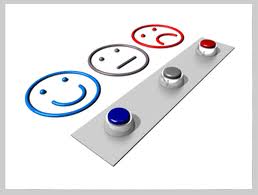 Back in the 90’s employee engagement surveys became the rage. Of course many of the surveys and the data were being collected in the 80’s. One of the seminal studies was made famous by the Harvard Business Review demonstrating a connection between employee satisfaction and revenue/customer purchasing. It was about Sears in their heyday.
Back in the 90’s employee engagement surveys became the rage. Of course many of the surveys and the data were being collected in the 80’s. One of the seminal studies was made famous by the Harvard Business Review demonstrating a connection between employee satisfaction and revenue/customer purchasing. It was about Sears in their heyday.
While US organizations spend over $700 million attempting to strengthen employee engagement, most of it is spent on surveys that do not work and not on efforts that do.
The Journal for Quality and Participation says that in many cases you are wasting your money. “The dirty little secret of employee engagement surveys is that they’re largely junk science.”
There are a number of problems with these surveys.
- The models were born in the 80’s and people still think they are relevant.
- Benchmark data can lead you astray by comparing your organization to averages and organizations that are either not relevant or face different challenges.
- Consulting firms provide recommendations that for problems that do not exist or have little impact.
- Action planning, the way it is handled, does not promote engagement principles.
- Organizations spend so much getting a picture of what their organization looks like from the survey, they invest little in actually impacting engagement.
- Survey companies have difficultly offering practical advice or understanding their client’s business.
These are fair criticisms, but then if you go to a survey company and expect to get more than a survey, perhaps you get what you pay for. In the UK, 3Ease is being offered by HR and Business Consultants, not survey companies, as part of a real plan to develop engaged workforces. You can’t manage what you can’t plan, and you can’t plan what you can’t understand.
Though well intended, by the time companies plan for the survey, analyze the survey, communicate results, plan for action and finally implement some initiatives, the management regime has changed, employees have turned over, and interest may or may not be maintained. How much useful it would be if organizations figured out how to sustain the pulse on the people on an ongoing basis?
As a statistician and survey specialist I pretty much agree. Surveys are useful tools in the hands of someone who knows what they are doing but, like all tools, they should only be used for their intended and specific purpose.
In 20 years experience as a provider and, previously, as a customer I have never seen any real value come from external comparisons; although I have seen them used to promote great activity and increased costs!
Too many EE surveys are no more than a bunch of questions that purport to measure something that is not even defined. Much of the statistical base is flaky to say the least.
Pingback: My Homepage
A survey can be a good tool, but only if it is specifically designed with the corporate strategy and current organisational initiatives in mind. Otherwise, it is only an ancillary activity to which managers pay little attention. As they say, “garbage in and garbage out,” but the axiom to that saying is “strategy in, meaningful actions out.”
Good article. It is reasonably obvious that measuring an abstraction like engagement or love is impossible.
It is very easy to create a fully engaged workforce as I learned when I did it as an executive. And I loved the hundreds of percent performance gains promised by none other than Stephen Covey senior. Any executive can learn it. Take a look at this short video.
http://www.bensimonton.com/how-to-create-engaged-employees.html
Best regards, Ben Simonton
Leadership is a science and so is engagement
Pingback: 10 beste artikelen i.v.m. retentiemanagement (week 13)
Yes! Finally something about Employee Engagement.